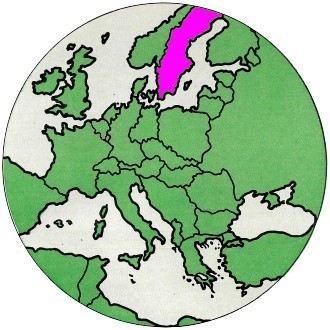Sweden Electronics Market |
|
This is the electronics market prediction for Sweden, circa 1966. It was part of a comprehensive assessment by the editors of Electronics magazine of the state of commercial, military, and consumer electronics at the end of 1965. Among Sweden's modern-day most recognizable electronics and related manufacturers are Ericsson, Saab Group and Electrolux, in existence in one form or another since 1965. Automotive company Volvo is also among the largest manufacturers there, although not specifically of electronics. A number of contemporary resources are available for obtaining reports (at a cost) on the electronics industry in almost every country on Earth. Among them are "Consumer Electronics in Sweden, August 2019" and "Electronics Industry in Sweden June 2019." Separate reports are included for West Germany (the Berlin Wall was still up then), the United Kingdom, France, Denmark, Austria, Sweden, Belgium, Switzerland, the Netherlands, and Italy. Russia, although obviously not part of Europe, is also covered. Sweden Electronics Market Booming for Automatic Equipment
The Swedish electronics industry expects a 14% boost in domestic business next year to $343 million, primarily because of a demand for automatic-control equipment by manufacturing companies - a demand prompted by a labor shortage and salaries that are the highest in Europe. The computer market is expected to expand to $40.6 million in 1966 from $35.4 million this year. The $40.6 million includes $4.8 million worth of process control systems. "Everyone is using electronics - in power, instrumentation and process control," says Stephen Finta, managing director of Nordiska Elektronik AB, which represents a number of American electronics components manufacturers in Scandinavia. The industrial business boost is expected to be large enough to offset a sharp decline in military electronics, deepened by a two-year delay in production of the Swedish Air Force's type-37 Viggen (Swedish for thunderbolt) aircraft. The new all-purpose defensive aircraft is now scheduled for service in 1971. Some other healthy business signs: • The consumer market, with television sales predicted at $30 million, is up $1.4 million over 1965. Most sales will be for replacement sets and will be made by three firms - Svenska AB Philips, Luxor Industri AB and AGA AB. Next year, the government is expected to announce the start of a second Swedish tv channel in 1968 and color telecasting in 1969. • In communications, the major achievement will be the installation of an electronic telephone switching system by the L.M. Ericsson Telephone Co. The system, using space division, will serve 5,000 subscribers. Space division employs a separate wire path for each conversation. In time division, logic gates sample several conversations in rapid sequence, then switches connect pairs of telephones in sequence. • The opening in Sweden, a country that imports most of its components, of a semiconductor manufacturing plant by Societá Generale Semiconduttori, of Italy in 1966. Industrial growth Saab Electronics, the civilian electronics sales division of the Swedish aircraft, automobile and electronics manufacturer, is typical of a number of Swedish companies moving fast to take advantage of industrial electronics growth. Jan Bakstrom, sales manager of Saab Electronics, says his firm's "main line is to develop and market products for automation for both Swedish and foreign industry." In the process-control field, Saab has developed a system for automatic control of dyeing machines in the textile industry. Saab is also selling a new line of equipment, which can be controlled remotely by computers. Arenco Electronics AB, sees 1966 as the year of the big breakthrough for numerical control (NC) with between 50 and 100 systems being sold. The industrial market is also being eyed by other firms, such as L.M. Ericsson. Although concentrating on communications, the company is watching the industrial control field, says Christian Jacobaeus, chief technical officer. Military need slowing down In addition to the delay in producing the type-37 Viggen aircraft, there's been a general slowdown in the military market, according to Frank Hammar. Hammar is the managing director of Standard Radio & Telefon AB, which is the Swedish subsidiary of International Telephone and Telegraph Corp. "The order books are filled because of previously heavy orders, but new military orders are down about one-third from what they have been," he says. "We look at the future with some concern." He expects Standard Radio's business to be up in 1966 though, partly because of its export sales in air-traffic control equipment. The company recently delivered a traffic control system to Arlanda International Airport outside Stockholm. Spokesmen see no strong improvement next year in the price war in components, which has affected the Swedish agents and the American, British, French and German manufacturing companies which supply the market.
Posted |
|

